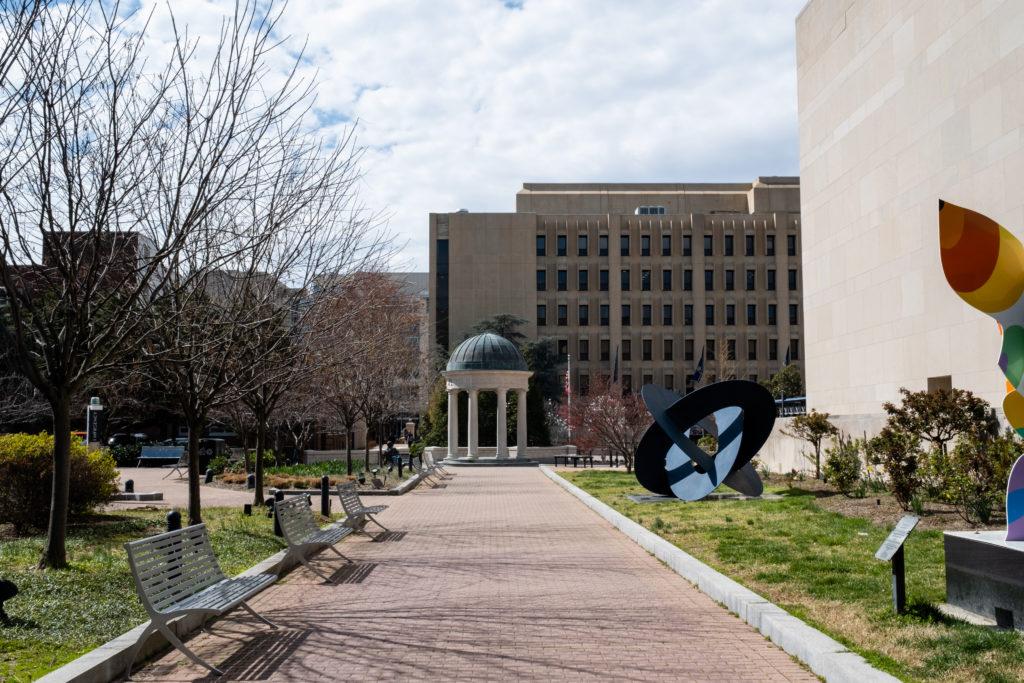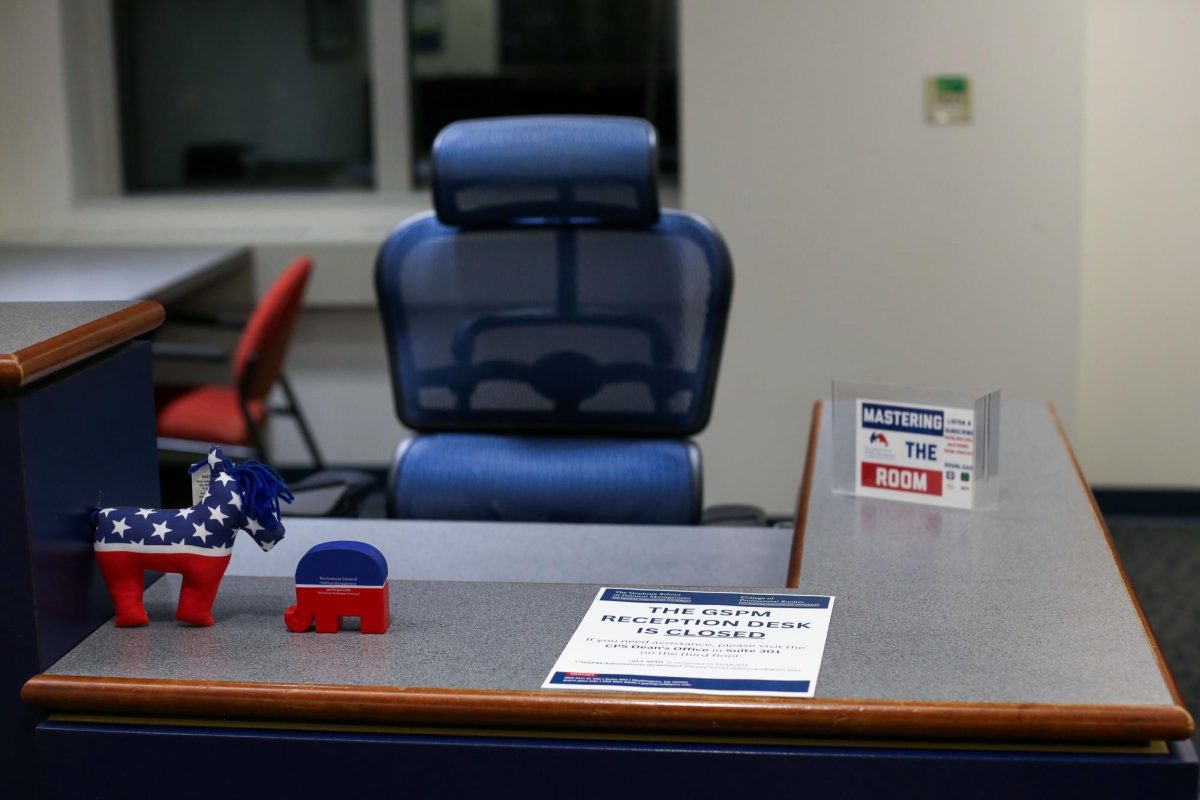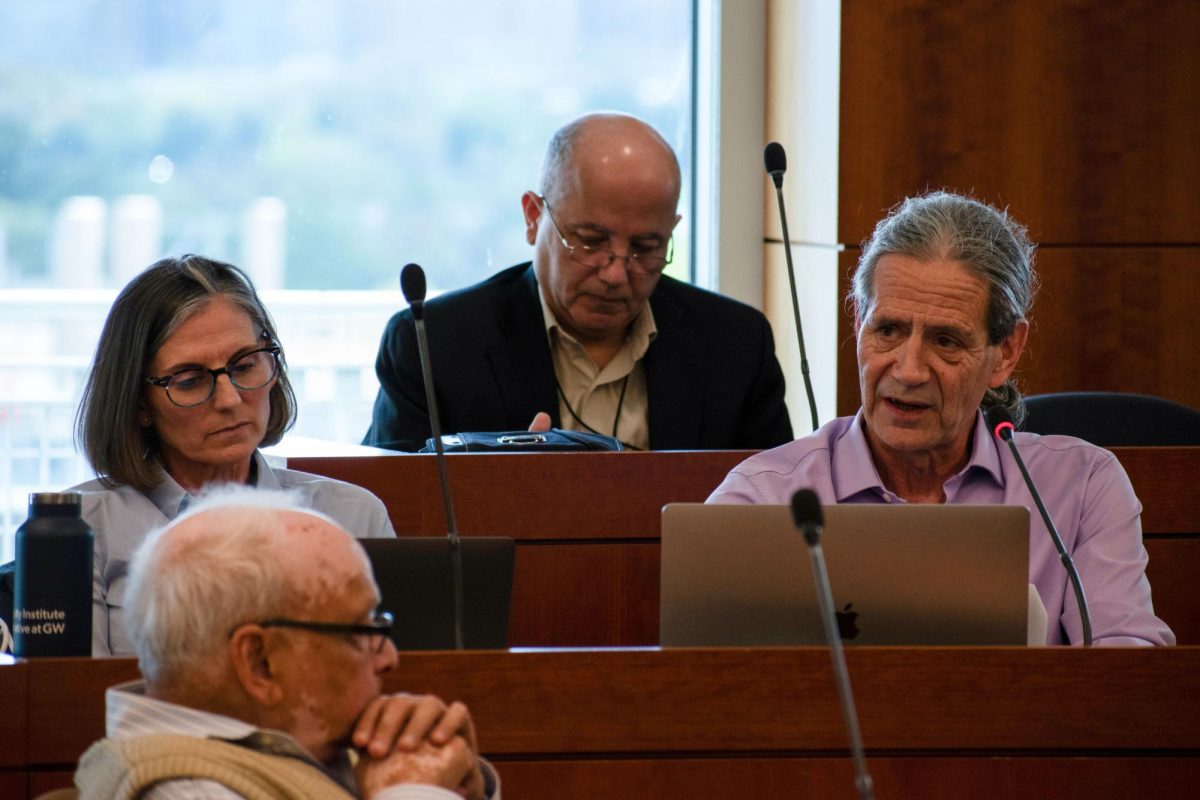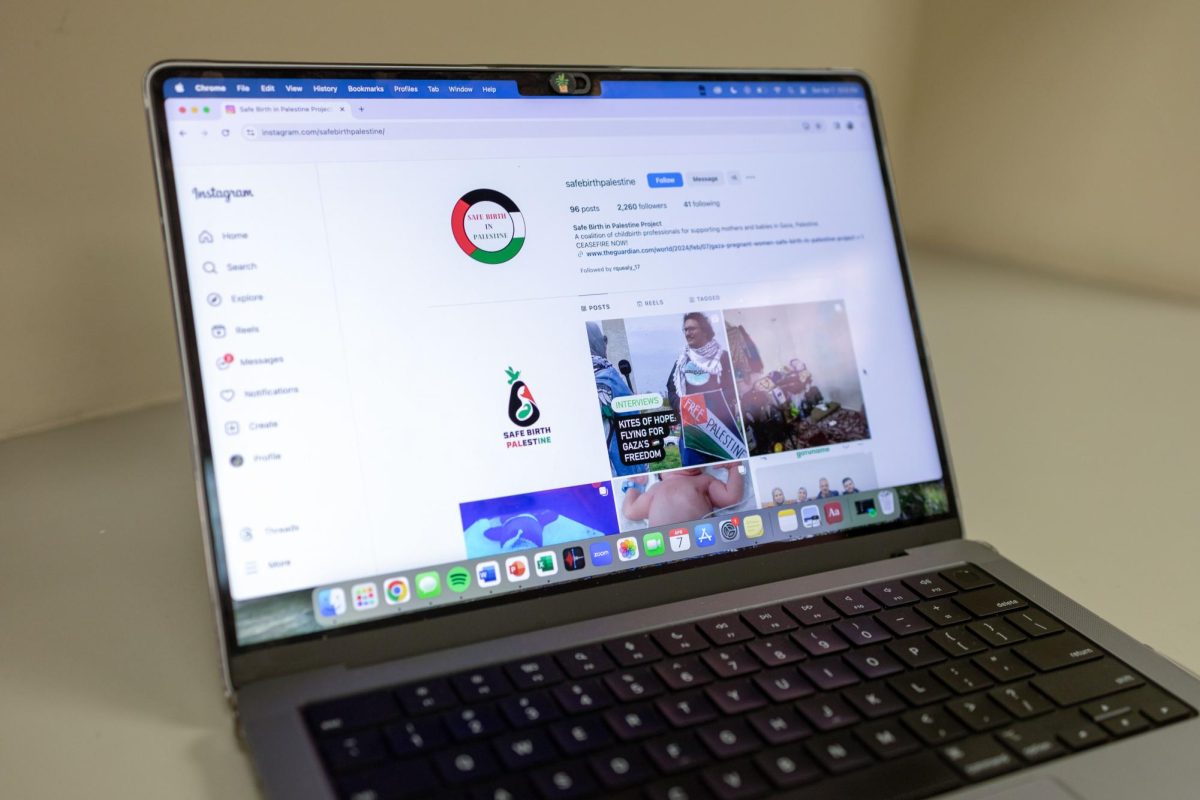One year ago this week, D.C.’s stay-at-home order instituted the beginning of a new normal, leaving GW’s once-bustling campus barren amid what seemed like an otherwise normal semester.
The weather was warming, but the typical frisbee tournaments and outdoor studying in University Yard were suddenly replaced by a never-ending flow of cars in line for coronavirus testing as cases surged around the country. GW’s operations had been completely upended with no resolution in sight.
As spring break ended, classes resumed remotely with most students logging in from their childhood bedrooms, while only about 500 students remained on campus. Officials had initially hoped for students to return as early as April 5, but as cases spiked, the University has remained in remote operations for more than a year.
The once-in-a-century pandemic would persist for months as GW found itself in the crossroads of history. A reignited movement for racial justice fueled by the police killing of George Floyd led demonstrators through campus on their way to the White House in the summer. Months later, the National Guard would occupy campus for days as part of unprecedented security measures in the wake of the insurrection at the U.S. Capitol.
These events have defined an extraordinary year for GW, with officials now expressing optimism for a return to campus this fall enabled by the continued distribution of vaccines across the country.
[gwh_image id=”1116874″ credit=”File Photo by Eric Lee ” align=”none” size=”embedded-img”][/gwh_image]
Throughout the year, GW’s medical enterprise stepped up to contribute research to the development of a COVID-19 vaccine and established a COVID-19 testing infrastructure for the community.
A team of researchers at the School of Medicine and Health Sciences led an arm of the Moderna vaccine trial. The trial included participants from around the D.C. area who logged their symptoms weekly and exceeded its goal for including Black and Latino participants.
“I have to say that we are particularly grateful for our volunteers given all of the negative press that has been floating around regarding vaccines, and they are really taking a step to volunteer and to control whether or not there will be a vaccine moving forward,” David Diemert, a professor of medicine and the lead researcher on GW’s arm of the trial, said at a press conference in the fall.
GW’s nursing students staffed the University’s testing centers, which they said allowed them to get hands-on experience in their field. But with the added workload on top of their nursing classes, students said they had to learn to manage their time between classes, testing and personal lives.
Faculty also stepped up to study the pandemic using the University’s internal fund for COVID-19 research. Projects ranged from studying the pandemic’s effect on primary school education throughout the DMV to how the pandemic has impacted Black adults’ mental and physical well-being.
“I am aware there are a lot of disparities already in D.C., and we have seen some of those augmented because of COVID, especially when you look east of the river where Wards 7 and 8 are located versus the other wards,” Janice Blanchard, a professor of medicine working on a project about residents’ perceptions of the city’s public health recommendations, said in an interview last month.
In the early months of the pandemic, an in-person fall 2020 semester seemed plausible. Officials submitted a reopening plan to the District in mid-June but later reversed plans after a summer surge in coronavirus cases just weeks before classes were set to begin.
As students remained at home, officials began facing a grim $180 million annual budget gap, driven by losses in tuition and housing revenue. Officials had quickly cut costs by suspending most capital projects and hirings, freezing merit raises and instituting a pay cut for top administrators, but more needed to be done to balance the budget.
Before classes moved online, University President Thomas LeBlanc had sought to reduce the undergraduate population by 20 percent over five years as part of his 20/30 Plan, but officials placed the plan on hold in April once the pandemic began threatening GW’s enrollment levels. Undergraduate enrollment ultimately fell nearly 8 percent this fall, including a large decline in the international student population.
Officials began laying off employees and announced plans to suspend GW’s employee retirement contributions. These moves brought up tensions with many faculty who said the cuts could have been avoided if officials had listened to their concerns before the pandemic about the 20/30 Plan’s impact on University finances.
“Our competitors are outpricing us, in part because the 20/30 Plan has made us more expensive – we’re not competing well,” Jamie Cohen-Cole, a faculty senator and associate professor of American studies, said at a Faculty Senate meeting in December. “This isn’t a COVID problem – schools in our market basket have a larger first-year class than we do.”
Officials admitted multiple rounds of students off the waitlist and the largest number of transfer students in years to stabilize enrollment levels. But GW is expected to fall short of its pre-pandemic target for tuition revenue by tens of millions of dollars, which is also driven by this year’s 10 percent undergraduate tuition discount during remote learning.
[gwh_image id=”1132877″ credit=”File Photo by Grace Hromin | Assistant Photo Editor” align=”none” size=”embedded-img”][/gwh_image]
Many of the layoffs came as part of broader restructurings of GW’s administrative units.
Criticisms over LeBlanc’s hiring of Heather Swain, who later rescinded her offer to lead GW’s newly reorganized communications shop, brought tensions between faculty and LeBlanc to a new high. Some sought to censure him or even hold a no-confidence vote.
The Student Association, more than 40 student organizations and hundreds of GW community members called on LeBlanc to resign in a matter of weeks.
After trustees asked faculty to tone down their criticism, the Faculty Senate ultimately voiced “severe disapproval” for Swain’s hiring. The wider Faculty Assembly voted to establish a faculty-wide survey of LeBlanc’s leadership abilities a few weeks later.
The survey results indicated barely a quarter of full-time faculty agreed that they had confidence in LeBlanc’s effectiveness as a leader. Trustees are now conducting a standard review of LeBlanc as they decide whether or not to extend his contract, which expires next year.
As the survey was underway and GW’s health care workers began receiving the vaccine at the start of the year, an already extraordinarily tumultuous year took another turn.
[gwh_image id=”1139253″ credit=”File Photo by Zach Brien | Staff Photographer” align=”none” size=”embedded-img”][/gwh_image]
Thousands traveled to the Ellipse Jan. 6 for the “Save America Rally,” just blocks from campus, in protest of Congress’ verification of President Joe Biden’s victory in the November general election.
Later in the day, after former President Donald Trump encouraged rallygoers to march to the U.S. Capitol, the crowd turned into a violent mob. Hundreds stormed the building with Congress and former Vice President Mike Pence still inside. Many rioters had parked in GW garages.
As the demonstrations turned violent, officials activated an emergency operations center and increased the GW Police Department’s presence on campus.
“When we think about our location, it means much more to us than our physical proximity to events on Capitol Hill or at the White House,” LeBlanc said the day after the riot. “At GW, our location represents the democratic ideals we uphold, our sense of civic responsibility and our passion for public service. It is a constant reminder that we must use our teaching and research mission in service of the public good and in service of democracy – especially when that democracy is threatened.”
As threats continued, campus entered military occupation as eyes turned toward the inauguration.
Officials gave students on campus special identification cards to prove their residency to National Guardsmen and other law enforcement as Foggy Bottom and much of D.C. was transformed into an armed fortress. GW’s offices and COVID-19 testing sites shut down out of security concerns.
“If you are not required to be in the District, avoid the downtown area and do not come to the Foggy Bottom Campus,” officials said.
[gwh_image id=”1139252″ credit=”File Photo by Lillian Bautista | Senior Staff Photographer ” align=”none” size=”embedded-img”][/gwh_image]
Except for the National Guardsmen marching through campus, life came to a near standstill.
“It was as quiet as a park,” LeBlanc said in an interview following the inauguration. “The whole area was empty. It was shut down. The construction noises were gone. There were no people out. We told the students to all stay inside – it was really an experience.”
[gwh_image id=”1139109″ credit=”File Photo by Anthony Peltier | Photographer” align=”none” size=”embedded-img”][/gwh_image]
As security concerns subsided following the inauguration, hundreds of additional students returned to campus in late January, bringing the total to about 1,500. Vaccine production was increasing, some budget restrictions began to loosen and the end of the pandemic finally seemed within reach.
Officials began earnestly planning the University’s post-pandemic future, forming groups to examine areas like academics.
“They’re going to read articles, journals and research about how to operate in a pandemic and beyond from the things that we’ve learned,” Provost Brian Blake said in a January interview. “They’re going to have listening sessions with students, staff and faculty to glean out what the best practices are, and then they will talk to administrators and they’ll pull this information together.”
Students are now completing the end of an entirely remote academic year, with the attention now shifting toward the fall.
Officials have repeatedly said GW will be open in person this fall to the “fullest extent possible,” and they plan to house up to 2,000 students this summer and ramp up testing and public health protocols.
“We are increasingly optimistic about what we are seeing,” officials said in an email to the GW community earlier this month. “As always, safety, care and our commitment to fulfilling our academic mission will guide our decisions, and we will incorporate flexibility into our plans wherever possible to meet the varying in-person or remote needs of our community.”
Isha Trivedi contributed reporting.











